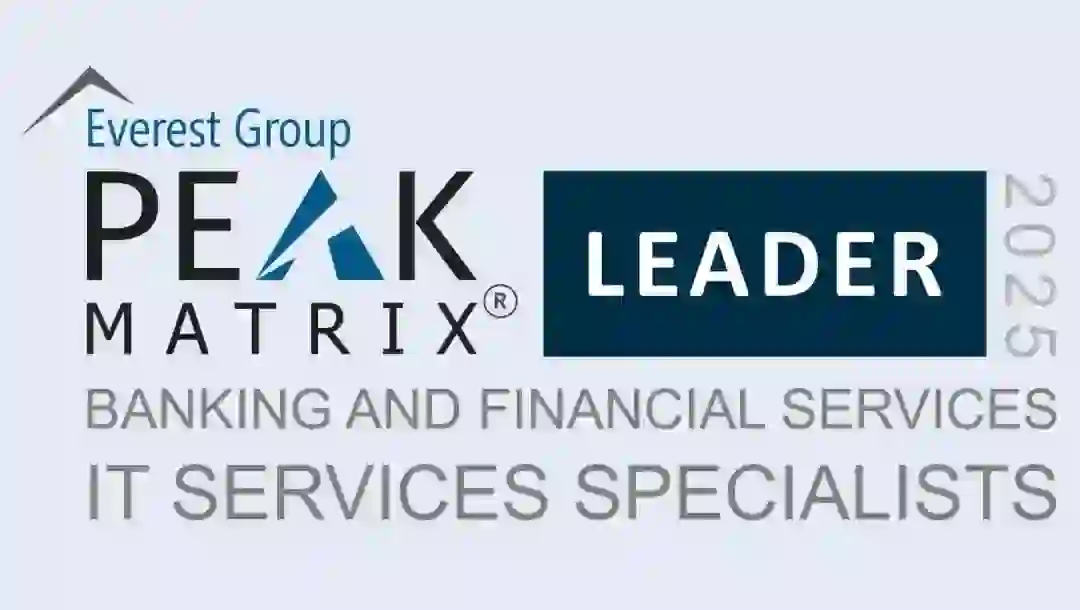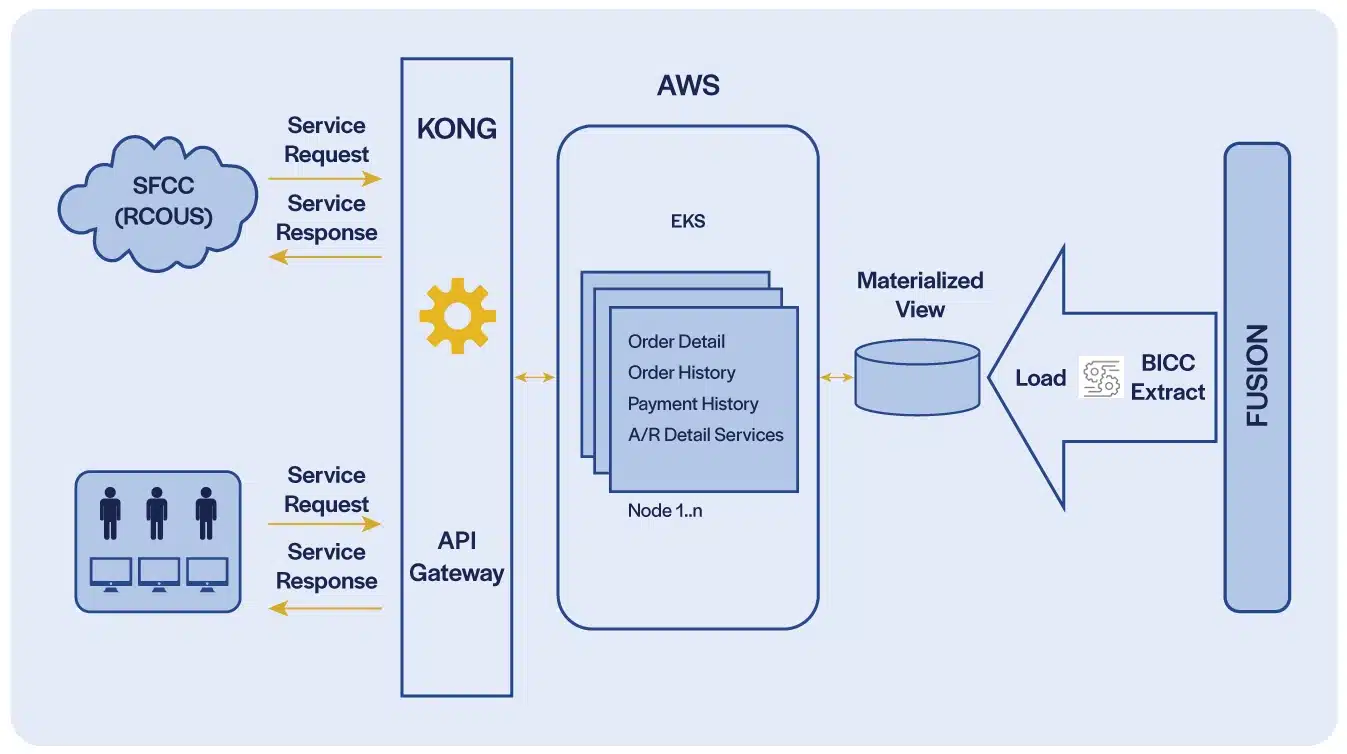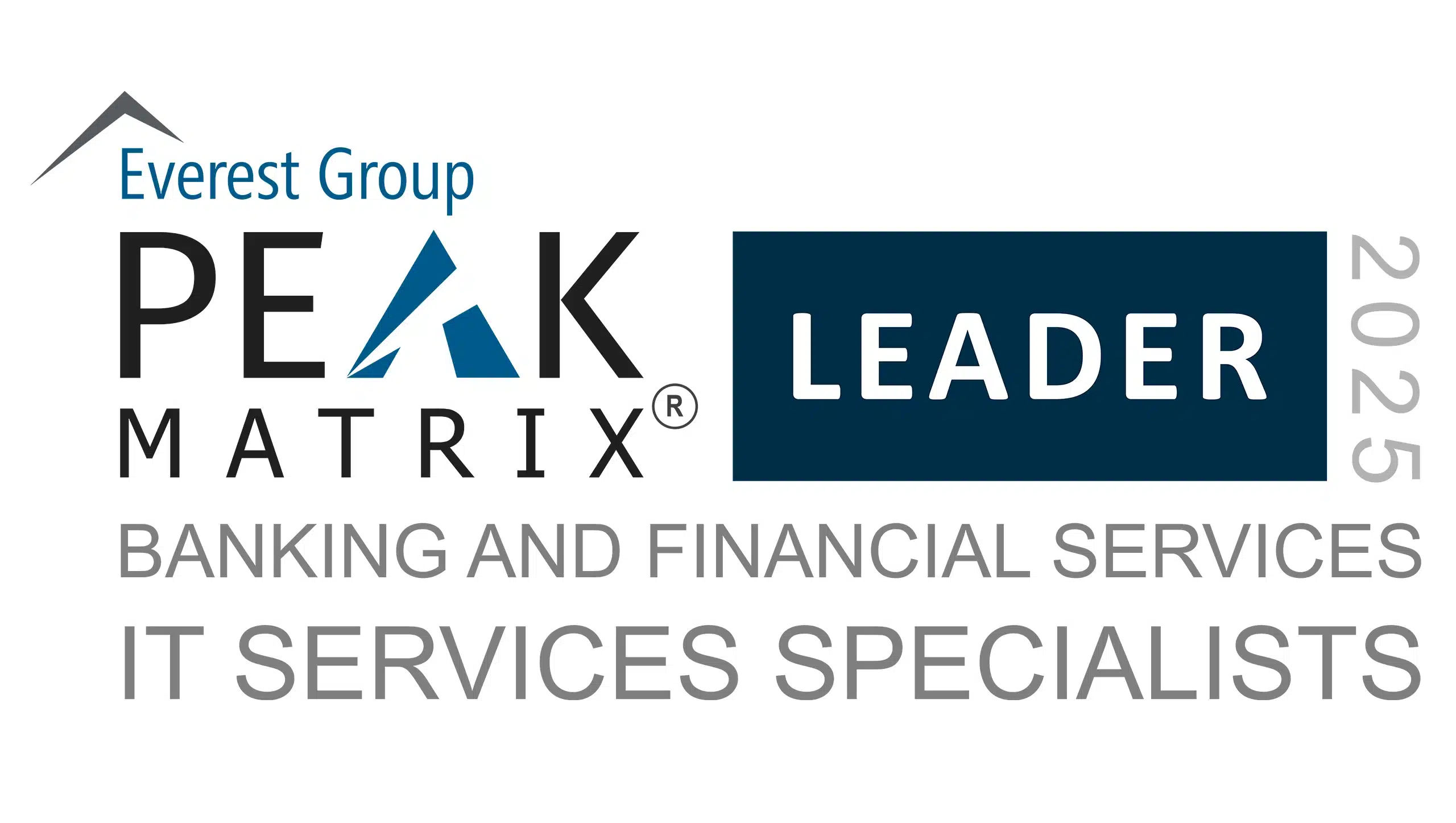The 2025 Payments Canada Summit, themed Innovate-Collaborate-Transform, is May 6 - 8 at the Automotive Building in Toronto, Ontario. This forum is considered Canada’s premier payments event, bringing together more than 1,900 participants to discuss innovation, challenges and opportunities in this dynamic global industry. Financial institutions, payments and technology service providers, retailers, monetary and regulatory professionals will connect, learn, and share ideas through presentation and networking sessions. The key topics relate to improving outcomes in digital payments, consumer experiences, risk and fraud mitigation, cross-border and other payments policies.
Connect with three of our banking and financial services (BFS) technology experts at the Summit to discuss digital transformation and payment system modernization: Subramanian Viswanathan, Associate Vice President, Mehul Shah, Associate Director, and Suneela Katikala, Senior Client Partner.
The advanced technologies that Iris delivers – across AI / Generative AI, Application Development, Automation, Cloud, DevOps, Data Science, Enterprise Analytics, and Integrations - are driving innovations in the payments sector every day. Our experienced global team helps financial institutions and payments providers enhance operations, security, scalability, cost-efficiency, and compliance in the myriad platforms, processes and systems supporting their domestic and international payments transactions. Iris has served BFS clients for more than 30 years and was named a Leader in BFS IT Services by Everest Group in its PEAK Matrix® Assessment 2025. Iris is also PCIDSS 4.0-certified to ensure robust cyber security and compliance for our clients involved in payment card processing or that store, process, or transmit cardholder data and/or sensitive authentication data.
Contact our team at the Summit or anytime at Iris Software Banking and Financial Services to learn more about our future-ready technology solutions. You can also read our Perspective Papers for insights on Real-world Asset Tokenization, leveraging Generative AI for Asset Tokenization and the state of Central Bank Digital Currency.
Contact
Our experts can help you find the right solutions to meet your needs.
Get in touchJoin us at the InsurTech Hartford Symposium

The InsurTech Hartford Symposium 2025 is April 29 and 30 at the Connecticut Convention Center. The focus of the forum’s numerous speakers, sessions, and attendees is on innovation, and how it’s driving digital transformation and growth in the insurance industry.
As most insurers’ strategic objectives include the improvement of product line innovation, personalized customer experience, operational efficiency and security, and compliance and risk management, partnering with experienced technology service providers like Iris Software is critical to their business success.
At the Symposium, insurance leaders and innovators can meet Venkat Laksh, Senior Client Partner and seasoned InsurTech pro, to learn how insurers are applying our advanced software engineering solutions, in Application Development, Automation, AI / Generative AI, Data Science, Enterprise Analytics, and Cloud, to modernize tech infrastructure, optimize business competencies and secure their digital futures.
Connect with Venkat at the InsurTech Hartford Symposium 2025 for beneficial conversation on the latest InsurTech innovations and trends. You can also contact Venkat and our InsureTech team and get more information about our InsurTech solutions and services here: Insurance Technology Services | Iris Software.
Contact
Our experts can help you find the right solutions to meet your needs.
Get in touchEverest Group Names Iris Software a Leader in BFS IT Services

Iris is proud to be recognized as a Leader in the inaugural Banking and Financial Services (BFS) IT Services Specialists PEAK Matrix® Assessment 2025 by Everest Group. This assessment is the first-ever for this category, and for Iris!
We were evaluated along with 29 other BFS IT service providers on our market presence, value delivery, strategic vision, innovation, technical capabilities, functional knowledge, and buyer references.
Pranati Dave, Practice Director, Everest Group, stated, “Iris Software’s expertise in capital markets and risk and compliance transformation, combined with a skilled talent pool and a strong reputation for execution, continues to drive its success with top-tier financial institutions. Clients have consistently recognized Iris for its low attrition, engineering rigor, and collaborative delivery model. Its investments in ML Ops, AI/ML, and modernization of cloud-based data and risk platforms have helped Iris earn a Leader recognition on Everest Group’s inaugural Banking and Financial Services (BFS) IT Services Specialists PEAK Matrix® Assessment 2025.”
Sunil Puri, President, Iris Software, stated, “We are honored to be named a Leader in BFS ITS by Everest Group. During our more than 30 years of growth in the BFS and other sectors, including Capital Markets & Investment Banking; Brokerage, Wealth & Asset Management; Commercial & Corporate Banking; Risk & Compliance; Retail Banking & Payments; Anti-Money Laundering & Know-Your-Customer; Insurance; Manufacturing; Logistics; Life Sciences and Professional Services, we have been a long-term partner in our clients' transformation journeys - helping to build, integrate and modernize complex platforms, systems, and applications.”
When IT matters most, clients call upon Iris to provide mission-critical software engineering and advanced application development services across AI/Generative AI, Automation, Cloud, Data & Analytics, Integrations, DevOps and Quality Engineering.
We remain steadfast in our vision of being our clients’ most trusted technology partner and thank our associates for their dedication and innovation.
Learn more about our BFS services, value proposition and client success stories and contact our team today.
Disclaimer
Licensed extracts taken from Everest Group’s PEAK Matrix® Reports, may be used by licensed third parties for use in their own marketing and promotional activities and collateral. Selected extracts from Everest Group’s PEAK Matrix® reports do not necessarily provide the full context of our research and analysis. All research and analysis conducted by Everest Group’s analysts and included in Everest Group’s PEAK Matrix® reports is independent and no organization has paid a fee to be featured or to influence their ranking. To access the complete research and to learn more about our methodology, please visit Everest Group PEAK Matrix® Reports.
Contact
Our experts can help you find the right solutions to meet your needs.
Get in touchLIMRA 2025 Workplace Benefits Conference

The LIMRA (Life Insurance Marketing and Research Association) 2025 Workplace Benefits Conference takes place April 23-25, 2025, at the Encore Boston Harbor in Boston, MA. With this year’s theme, Pathways to Growth, industry leaders and participants will examine the business and technology trends affecting the North American workplace benefits market. Speakers and attendees, primarily carriers and brokers of life, health, and related insurance coverage, and providers of employee benefits and technology solutions, will explore strategies for growth while addressing shifting consumer needs, the latest digital tools and technologies, and an increasing focus on innovation, outcomes and collaboration.
Venkat Laksh, Iris’ Global Lead – Insurance, and Senior Client Partner, will attend this forum. Iris provides leading insurance companies with advanced InsurTech services and solutions, including Software and Quality Engineering, AI/ML/Generative AI, Application Modernization, Automation, Cloud, Data Science, Enterprise Analytics and Integrations. These companies are applying next-generation, emerging technology through Iris to ensure their enterprises are future-ready, scalable, secure, cost-efficient, and compliant.
Talk about your digital priorities with Venkat at the LIMRA 2025 Workplace Benefits Conference and connect with our InsurTech team anytime to advance your digital transformation goals: Insurance Technology Services | Iris Software.
Contact
Our experts can help you find the right solutions to meet your needs.
Get in touchEnterprise-Grade DevOps for Scalable Blockchain DLT



Client
A leading provider of real-world asset (RWA) tokenization, digital currency, and interoperability solutions to the world’s largest financial players
Goal
To optimize blockchain DLT platforms for scalability, resilience, and seamless operations through enterprise-grade DevOps and SRE practices
Tools and Technologies
R3 Corda 5, Azure, AWS, G42, Docker, Kubernetes, Helm Charts, Terraform, Ansible, GitHub Actions, Azure DevOps, Jenkins, Prometheus, Grafana, Slack Integration
Business Challenge
Complex Multi-Node Deployments require a mechanism to upgrade CorDapps, notaries, and workers across network participants without downtime or compatibility issues. Meanwhile, security and compliance risks demand strict access controls, network segmentation, and security hardening to protect Corda nodes and ledger operations.
For infrastructure scalability and automation, an efficient approach was required for onboarding new participants and managing network topology across cloud environments. The lack of a Real-Time Monitoring system necessitated the detection of transaction failures, tracking node health, and providing proactive alerts.
To address security vulnerabilities, continuous scanning and security enforcement across CorDapps, containerized nodes, and CI/CD pipelines were required.

Solution
- Enabled zero-downtime CorDapp deployments with automated rollback and stateful upgrades, ensuring stability and ledger integrity
- Secured Corda nodes with RBAC, network segmentation, and security hardening, while optimizing autoscaling for dynamic ledger workloads
- Automated Corda network topology and participant onboarding using modular Terraform & Ansible configurations, ensuring scalability and repeatability
- Implemented real-time monitoring with Prometheus & Grafana, with Slack-based alerts for transaction failures and node health anomalies
- Ensured high availability and auto-healing for Corda network nodes and ledger operations
- Integrated DevSecOps with automated vulnerability scanning for CorDapps, containerized nodes, and CI/CD pipelines

Outcomes
- Accelerated blockchain deployment cycles through CI/CD automation increased deployment frequency by 40% and reduced failures by 60%
- Optimized kubernetes workloads for Corda 5 through efficient resource management resulted in 15% cost savings and improved ledger performance
- Scalable & secure blockchain infrastructure reduced manual intervention by 30%, enabling seamless scaling of Corda network participants
- Proactive incident management for DLT networks through real-time monitoring cut response time by 50% for blockchain issues, ensuring high availability
- Automated workflows accelerated development cycles by 25%, enhancing collaboration across blockchain and DevOps teams

Our experts can help you find the right solutions to meet your needs.
Seamless self-service portal integration with FINEOS



Client
A leading insurance provider specializing in absence management solutions
Goal
Migrate data and services from a legacy platform to FINEOS while ensuring a seamless user experience and improved system reliability
Tools and Technologies
Spring Boot, APIGEE, FINEOS AdminSuite, Splunk
Business Challenge
The client aimed to migrate data and services from its legacy Group Benefits Platform Transformation (GPT) system to FINEOS AdminSuite while maintaining a consistent user interface, improving data accuracy, and ensuring minimal downtime.
The system also required enhanced automation and monitoring to streamline absence creation for agents and employees.

Solution
- Developed APIs to integrate the legacy system with FINEOS AdminSuite for seamless absence management
- Designed an interactive self-service portal, allowing users to efficiently manage absences
- Used Spring Boot for service development and APIGEE for API integration
- Implemented Splunk for real-time monitoring and log analysis to enhance system reliability

Outcomes
- Increased system scalability, reliability, and data accuracy
- Enhanced user experience with a modern, intuitive interface
- Reduced time taken to create absences, improving efficiency for agents and employees
- Faster development cycles and better monitoring, ensuring proactive issue resolution

Our experts can help you find the right solutions to meet your needs.
InsurTech NY 2025 Spring Conference

The annual InsurTech NY Spring Conference is April 2-3, 2025, at Chelsea Piers in New York City. The theme of this year’s forum is InsurTech is the New R&D. The event brings together 900+ leaders and innovators in the industry, including carriers and brokers of life, health and disability, property and casualty (P&C), and specialty insurance; investors; and insurtech service providers like Iris Software. Each year, speakers and attendees focus on the technology and business management solutions that will enhance the operations, customer experience, and revenue streams of insurers.
Meet the leaders of our global InsurTech team - Ravi Chodagam, Vice President, Venkat Laksh and Abhineet Jha, Senior Client Partners - at InsurTech NY’s 2025 Spring Conference. As an integral and long-time technology partner to many top life, P&C, and specialty insurers, Iris has vast experience implementing agile and advanced technology and data solutions that ensure clients stay competitive and ahead of rapidly evolving trends in the dynamic insurance industry.
Discuss your tech priorities with Ravi, Venkat and Abhineet at the Spring Conference, or anytime, and learn how leading insurers apply our solutions in AI and Generative AI, Application Modernization, Automation, Cloud, and Data Science & Analytics to ensure their enterprises are future-ready, scalable, secure, cost-efficient, and compliant. You can also contact the team and learn more about our InsurTech Services here: Insurance Technology Services | Iris Software.
Contact
Our experts can help you find the right solutions to meet your needs.
Get in touchJoin us at Reuters Pharma USA 2025

Reuters Pharma USA 2025 Conference, noted as North America’s largest cross-functional pharmaceutical gathering, is scheduled between March 18-19, 2025, at the Pennsylvania Convention Center in Philadelphia. With the pharmaceutical industry continually pressured by shifts in market trends and participants, product development, consumer sentiment, and government regulations, attendees and speakers at this Conference will be seeking and sharing insights and strategies to best navigate change, remain competitive, and future-proof operational units as well as global enterprises.
Swarnendu Banerjee, client partner and seasoned IT professional for the pharmaceutical and life sciences sectors, will be attending the Reuters Pharma USA 2025 Conference. He will share Iris’ extensive experience in these domains. How our advanced capabilities in AI/Generative AI, Application Development, Intelligent Automation, Cloud, Data & Analytics, Integrations, and Quality Engineering have delivered successful outcomes in mission-critical engagements, ensuring quality and compliance, reducing costs, enhancing UX, modernizing, migrating, scaling, accelerating, and streamlining.
Connect with Swarnendu at the Reuters Pharma forum or anytime, or visit our Services and Life Sciences capabilities pages to explore our innovative approach and strategies for end-to-end digital transformation.
Contact
Our experts can help you find the right solutions to meet your needs.
Get in touchModernized Payments Hub Improves UX and Compliance



Client
U.S. operations of a leading Japanese bank
Goal
Modernize payments architecture to streamline processing and improve client experience
Tools and Technologies
Jenkins, Kafka, Spring, Oracle, JBoss, React, Elastic Search, Java, Node.js
Business Challenge
The evolving payments landscape, with the introduction of ISO 20022 and the dynamic nature of the regulatory environment, necessitated advancement in the bank’s payment processing capabilities.
The lack of a modern architecture hindered client experience, with multiple channels initiating various payment types that required complex processing.

Solution
Our team built a centralized payments hub to orchestrate data flows between payment initiation systems and product processors. The steps:
- Designed a flexible and scalable microservices-based architecture to facilitate translation, enrichment and processing of payment transactions
- Built a messaging layer to streamline data flows between systems, through support for various modes of interaction, e.g., MQ, API and file (canonical / industry standards such as NACHA, SWIFT, JSON, etc.)
- Introduced an API gateway to handle multiple payment types to enable channel agnostic payment capabilities
- Deployed a modular approach to support existing and new systems with isolation of core and product processors and avoid redundancies in capability builds
- Developed a React-based UI as the touchpoint for integrations between the payments hub and other systems

Outcomes
- A core payments engine capable of seamlessly integrating with multiple, complex systems
- Superior client experience, resulting from a holistic view spanning initiation, payment rails, and clearing
- A modernized payments platform that is ISO 20022-compliant and future-ready for processing and reporting needs
- Faster implementation of functionalities for payment processors

Our experts can help you find the right solutions to meet your needs.
Home » Services » Integration » Page 2

Containerized microservices optimize infrastructure
Migration of legacy interfaces from Oracle SOA to AWS EKS increases scalability, availability and maintainability and establishes a single version of truth across systems and functions for a global publishing house.

A leading global publishing house with significant operations in the U.S. had multiple Systems of Record (SOR) with a point-to-point integration between them and various operational and analytics marts built on legacy technologies. This led to the divergence of critical operational data across functions, delays in month-end and quarter-end processing as well as scalability and performance issues.
Iris Software’s team collaborated with the client to accelerate the migration of their legacy interfaces and services to AWS EKS through a phased approach that was best suited to meet the client’s need for a much faster deployment time to market. It involved:
- Defining the microservices and containerization technology stack for the migration of services.
- Developing containerized microservices using Spring Boot with externalized configuration to deploy into AWS EKS.
- Registering services hosted on AWS EKS with Kong API Gateway, enabling service discovery, auto-scaling and self-healing, as well as consumption of materialized views and response preparation.
- The migration from Oracle SOA to a loosely coupled set of capabilities with microservices architecture on AWS EKS enabled the delivery of a single version of truth to various consuming applications and channels, resulting in reduced operational issues and maintenance costs. It also ensures that the business can meet future demand spikes, minimize downtime, and maintain optimal performance.
Learn more by downloading the full success story here.
Contact
Our experts can help you find the right solutions to meet your needs.
Get in touchIndustries
Company

Bring the future into focus.



